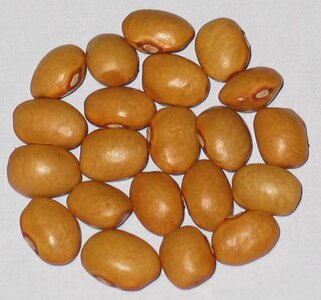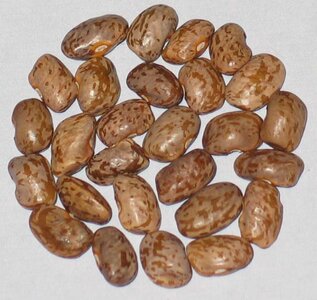- Thread starter
- #1,101
Blue-Jay
Garden Master
- Joined
- Jan 12, 2013
- Messages
- 3,429
- Reaction score
- 10,892
- Points
- 333
- Location
- Woodstock, Illinois Zone 5
Monachine - Pole, Snap, Dry. Photo Left. Monachine beans can be eaten fresh or dried. Fresh, they are stringless and yellow-green. The bean is an heirloom from Italy that was brought to the U.S. Pacific Northwest by Angelo Pellegrini, an English professor and culinary expert at the University of Washington. Pellegrini received the beans from his friend, winemaker Robert Mondavi, in the 1950s. Pellegrini named the bean "monachine," which means "little nuns" in Italian, because the white caps of the nuns resembled the beans. This years grower is from DeSoto, Wisconsin
Norridgewock - Pole Dry. Photo Right. An Abenaki heritage bean with a notable history from pre-Civil War times. Good eaten fresh and tender. The Norridgewock bean comes from an Abenaki village that was destroyed by a British attack in 1724. The bean was cultivated by European American families in the region. This years grower is from Hallowell, Maine.


Monachine...............................................................Norridgewock
Norridgewock - Pole Dry. Photo Right. An Abenaki heritage bean with a notable history from pre-Civil War times. Good eaten fresh and tender. The Norridgewock bean comes from an Abenaki village that was destroyed by a British attack in 1724. The bean was cultivated by European American families in the region. This years grower is from Hallowell, Maine.


Monachine...............................................................Norridgewock



 Now I sit and hope that yours arrives soon too!! This is a good sign that Canada Post didn't shelve it's received packages in Forgottencorner Land!
Now I sit and hope that yours arrives soon too!! This is a good sign that Canada Post didn't shelve it's received packages in Forgottencorner Land!
